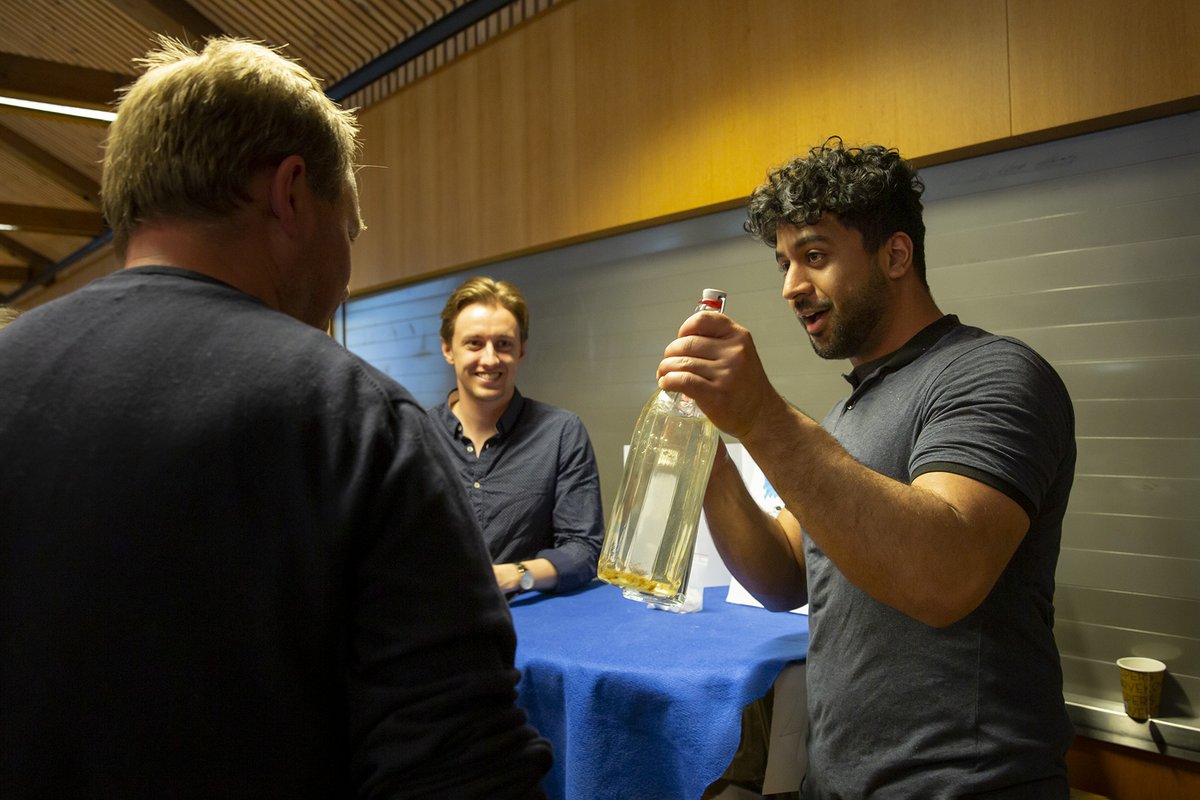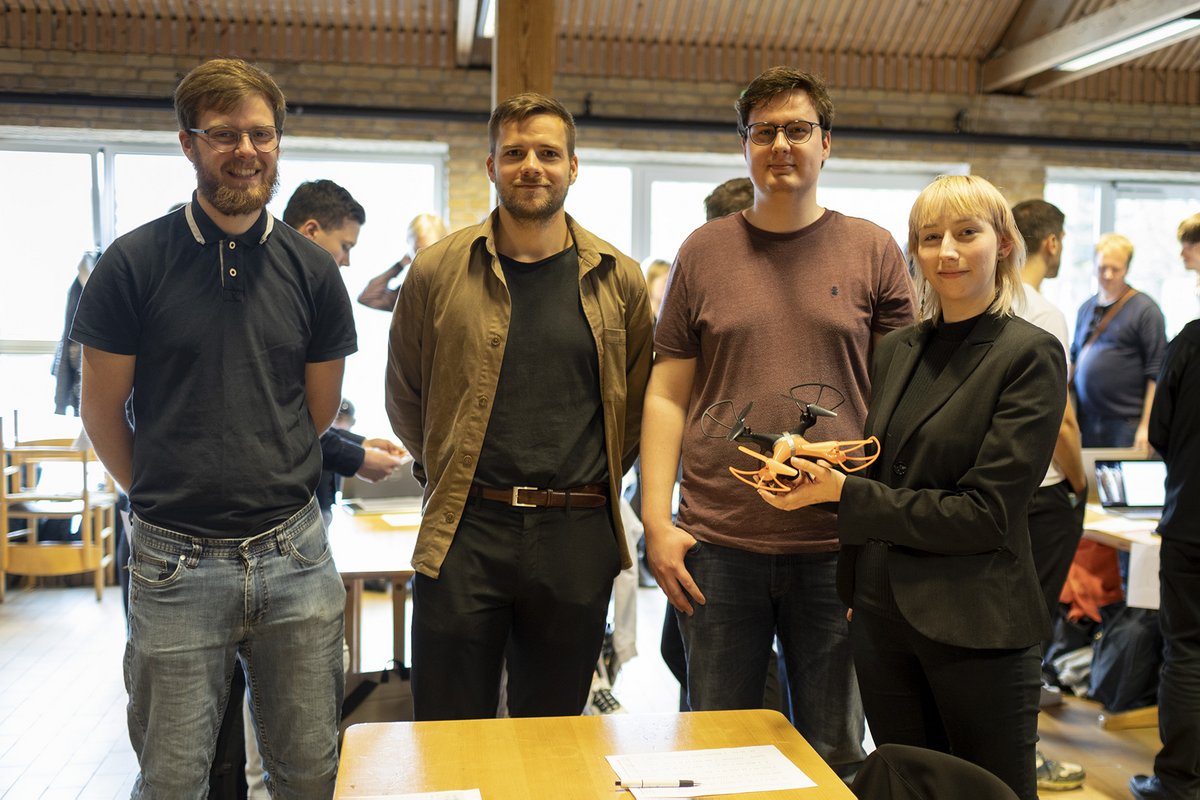Students pitch radical new solutions to business and industry
Radical innovation. Under this headline, 275 engineering students explained why their ideas have the potential to disrupt an entire industry. They made their pitches last week at the Applied Innovation in Engineering 2022 event in Stakladen at Aarhus University (AU).

How can we secure better access to clean drinking water? How do we get modern technology to communicate with old aircraft? And how do we get drones to communicate with each other intelligently? These were just some of the issues that future AU engineers had solutions to when they met with business and industry at the Applied Innovation in Engineering 2022 event in Stakladen on Tuesday, 10 May.
- ALSO READ: Engineers are in demand like never before
Forty-five companies, including Grundfos, Velux, Stibo and Terma, turned up to hear the students pitch their proposals for solutions to specific issues that the companies are working on every day.
Looking for gold
Aziz As Rashid is studying biotechnology and chemical engineering, and he is one of the students making a pitch. Together with his group, he has been working on an idea for a water purification system, which, with a sensor, can measure water pollution and, with the help of artificial intelligence and machine learning, can purify water without overdosing chlorine, which is otherwise one of the major challenges today. He demonstrates his idea to Grundfos using two bottles of water, one with clean water and one with dirty.
"We can sell the idea to them for DKK 10 million, but they'll have to deicide immediately," he says with a broad grin, before the whole group broke out in laughter.
(The article continues below the picture)

Niels Thorup is the head of programme for water at the Grundfos Foundation, and he walks around enthusiastically listening to the students' proposals and asking detailed and critical questions about the technologies and solutions being presented. What does it cost to manufacture? What are the response times? How durable is it, and how far are you with development of the technology? And just as he challenges the students, the students challenge him:
"I'm here today to challenge my conventional thinking and to be presented with entirely new approaches," he says. However, he is not expecting to find a golden egg in the form of a brilliant and radical new idea.
"I don't think the young people can deliver in such a short time. However, the students are another type of gold that a company like Grundfos wants to attract," says Niels Thorup, who also hopes to nudge the students towards a future career at Grundfos.
(The article continues below the picture)

State-of-the-art: Drones communicating like shrimps
At the other end of the room, a group of students are sitting together around a drone. They have come up with a solution for Terma, who develop and produce monitoring and defence systems. The solution can help the drone communicate with other drones without being discovered. The solution was inspired by a shrimp that can see polarised light. The group will transfer this phenomenon to the drone, which can communicate with other drones using light transmitted at different frequencies.
Julia Bartnik is studying computer engineering and she describes her group's idea as state-of-the-art. The technology the group uses is so state-of-the-art that it is still being developed. And innovative thinking is actually not that easy, she says:
"The most important takeaway from this process has been the training in dropping your first instincts, and then trying to continue coming up with alternative solutions. Kill your darlings, as they say."
Annette Skyt is a specialist in innovation at Terma, and she listens enthusiastically when Julia Bartnik and her group explain how the drone will work. This is the third time Annette Skyt has attended the event, and she considers it a particular strength of the process that the students are working across different fields of study. This makes the groups more diverse, which in turn challenges the conventional thinking that will otherwise quickly arise.
"This means that there is no such thing as a stupid question, and it's easier to open up for crazy and wild ideas, which is exactly what we need to think innovatively," says Annette Skyt, who has great praise for Julia Bartnik and her group:
"I can see a potential in using these new ways of thinking about waves – also in completely different areas than drones," she says.
The Applied Innovation in Engineering course is a cross-disciplinary course with five ECTS credits. On the course, all MSc in Engineering students in their 9th semester work together to find radical solutions in demand from the business community.
Contact
Journalist Solveig Kolstad
Mail: solk@au.dk
Tel.: +4593522739
